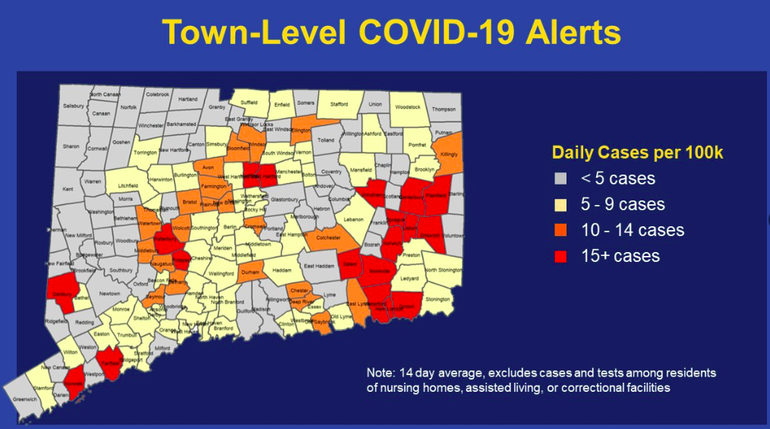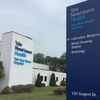
Processing Your Payment
Please do not leave this page until complete. This can take a few moments.
-
News
-
Editions
-
- Lists
-
Viewpoints
-
HBJ Events
-
Event Info
- 2024 Economic Outlook Webinar Presented by: NBT Bank
- Best Places to Work in Connecticut 2024
- Top 25 Women In Business Awards 2024
- Connecticut's Family Business Awards 2024
- What's Your Story? A Small Business Giveaway 2024 Presented By: Torrington Savings Bank
- 40 Under Forty Awards 2024
- C-Suite and Lifetime Achievement Awards 2024
- Connecticut's Health Care Heroes Awards 2024
-
-
Business Calendar
-
Custom Content
- News
-
Editions
View Digital Editions
Biweekly Issues
- April 29, 2024
- April 15, 2024
- April 1, 2024
- March 18, 2024
- March 4, 2024
- February 19, 2024
- February 5, 2024
- January 22, 2024
- January 8, 2024
- + More
Special Editions
- Lists
- Viewpoints
-
HBJ Events
Event Info
- View all Events
- 2024 Economic Outlook Webinar Presented by: NBT Bank
- Best Places to Work in Connecticut 2024
- Top 25 Women In Business Awards 2024
- Connecticut's Family Business Awards 2024
- What's Your Story? A Small Business Giveaway 2024 Presented By: Torrington Savings Bank
- 40 Under Forty Awards 2024
- C-Suite and Lifetime Achievement Awards 2024
- Connecticut's Health Care Heroes Awards 2024
Award Honorees
- Business Calendar
- Custom Content
CT's COVID alert map gets redder; Positive test rate at 2.3%
 Oct. 22 COVID-19 map.
Oct. 22 COVID-19 map.
The novel coronavirus is spreading in Connecticut with COVID-19 cases increasing in the I-84 corridor from Hartford to Waterbury, staying high in smaller towns to the east and producing a stunning flare-up in Norwalk, state officials said Thursday.
Updated every Thursday, the state’s COVID alert map is ablaze in autumn colors — yellows, oranges and reds that show residents where the infection is active. Last week, much of the map was gray —signifying communities with fewer than 5 cases per 100,000 people.
Gov. Ned Lamont, his public-health adviser and other top aides described a spread that so far cannot be linked in a significant way to reopened schools and eased restrictions on commerce. The culprit is small interactions, not super-spreader events.
“Turning this around is within our own personal control,” said Dr. Deidre Gifford, the acting commissioner of public health.
The state is emphasizing the 3 Ws: Wearing a mask, washing hands and watching your distance from others. The daily rate of positive COVID tests was 2.3% of the 22,117 reported, a percentage point higher than a week ago. The seven-day rolling average was 2.1%.
There were two deaths, bringing the total to 4,569. About 60% of all those who have died of COVID in Connecticut since March were at least 80 years old, 80% were at least 70 and 94% were at least 60. But there also have been dozen of deaths of patients in their 30s and 40s and nearly 200 in their 50s.
Hospitalizations from COVID were up 19 to 232 on Thursday. That is three times the level of just a month ago but still only a small fraction of the 2,000 at the peak in the spring. Thirty-nine of those hospitalized with COVID were in intensive care. About one quarter of all hospital beds and half of ICU beds are available.
The alert map is meant to inform, not frighten, Gifford said. Yellow means no more than 9 cases per 100,000; orange, no more than 14; and red, 15 or more. On Thursday, the number of red towns rose from 11 to 19, though two dropped off.
“Panic is not helpful in this kind of a situation, but action and well-informed strategic action is helpful, so I think we should all be concerned and then take the appropriate actions,” Gifford said.
Red-alert communities have the option of returning to Phase 2 of COVID restrictions, which limit indoor dining at restaurants to 50% of capacity and impose other limits on public venues. The state went to Phase 3 on Oct. 8, allowing 75% capacity at restaurants and the the limited reopening of theaters.
Windham, the home to Eastern Connecticut State University, is the only community staying in Phase 2. It had 22.6 cases per 100,000. Norwich and New London were at 40 cases per 100,000 or above.
The governor and Gifford said the paucity of cases traced to large public gatherings argues in favor of enforcing rules on wearing face covering and encouraging hand-washing and social distancing, which Lamont acknowledged will get more challenging as socializing goes indoors and the holidays approach.

Lamont sounded like a parent telling a family that holiday plans would have to be changed, when they had hopes of a festive season.
“Here we go again. I know we’re now moving into the holiday season. We’ve got Halloween in about 10 days and Thanksgiving thereafter,” Lamont said.
Lamont urged residents to take a break from Thanksgiving dinners that can crowd three generations around dining tables that otherwise go unused for much of the year. He is reluctantly suspending another holiday at the Executive Residence, the distribution of candy.
“This year, for the first year, we’re not going to be able to do Halloween at the governor’s residence. We’re in Hartford, and it is in a red zone. And we do attract a crowd,” he said. “And I say that with great disappointment.”
Hartford was in the red zone last week and again Thursday. New on Thursday were Waterbury, Norwalk and Fairfield. Cases in Fairfield were largely traced to Fairfield University and Sacred Heart, but community spread among networks of friends and families were the major driver.
In Norwalk, the numbers were stunning: a jump of 72 to 163 active infections in just two weeks. The community has a testing positivity rate of 5%, more than double the state average. Gifford said the speed and reach of the flareup in Norwalk was the latest reminder that COVID-19 is extremely contagious.
Lamont, who is 66, urged people to vote by absentee, an option available to every Connecticut voter due to the COVID this year. But the governor intends to cast his ballot in person, while wearing a mask and observing social-distancing protocols, at his local precinct in Greenwich.
He wants people to be safe, but he also wants them to feel secure in voting.
“That’s a message I wanted to send,” he said.

2022 Giving Guide
This special edition informs and connects businesses with nonprofit organizations that are aligned with what they care about. Each nonprofit profile provides a crisp snapshot of the organization’s mission, goals, area of service, giving and volunteer opportunities and board leadership.
Learn more
Subscribe
Hartford Business Journal provides the top coverage of news, trends, data, politics and personalities of the area’s business community. Get the news and information you need from the award-winning writers at HBJ. Don’t miss out - subscribe today.
Subscribe
2024 Book of Lists
Delivering Vital Marketplace Content and Context to Senior Decision Makers Throughout Greater Hartford and the State ... All Year Long!
Read Here-
2022 Giving Guide
This special edition informs and connects businesses with nonprofit organizations that are aligned with what they care about. Each nonprofit profile provides a crisp snapshot of the organization’s mission, goals, area of service, giving and volunteer opportunities and board leadership.
-
Subscribe
Hartford Business Journal provides the top coverage of news, trends, data, politics and personalities of the area’s business community. Get the news and information you need from the award-winning writers at HBJ. Don’t miss out - subscribe today.
-
2024 Book of Lists
Delivering Vital Marketplace Content and Context to Senior Decision Makers Throughout Greater Hartford and the State ... All Year Long!
ABOUT
ADVERTISE
NEW ENGLAND BUSINESS MEDIA SITES
No articles left
Get access now
In order to use this feature, we need some information from you. You can also login or register for a free account.
By clicking submit you are agreeing to our cookie usage and Privacy Policy
Already have an account? Login
Already have an account? Login
Want to create an account? Register
Get access now
In order to use this feature, we need some information from you. You can also login or register for a free account.
By clicking submit you are agreeing to our cookie usage and Privacy Policy
Already have an account? Login
Already have an account? Login
Want to create an account? Register






0 Comments